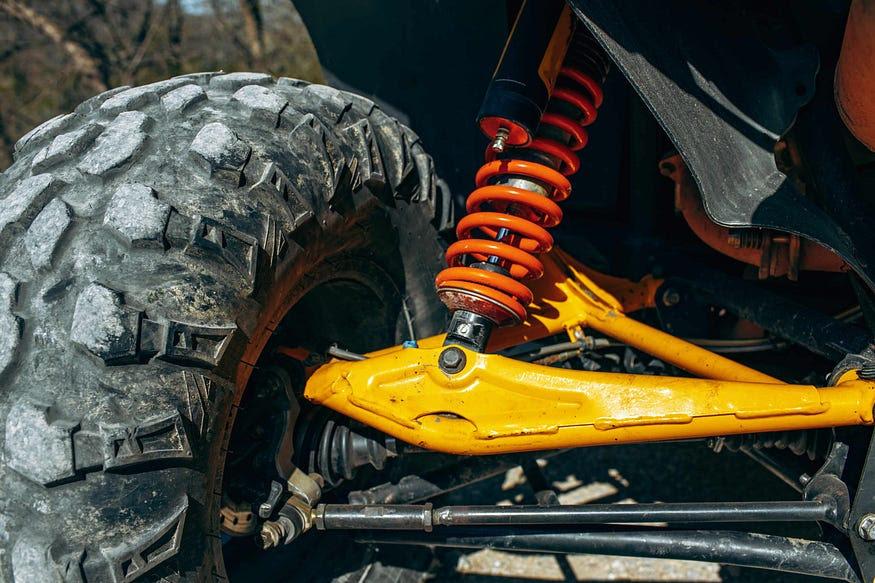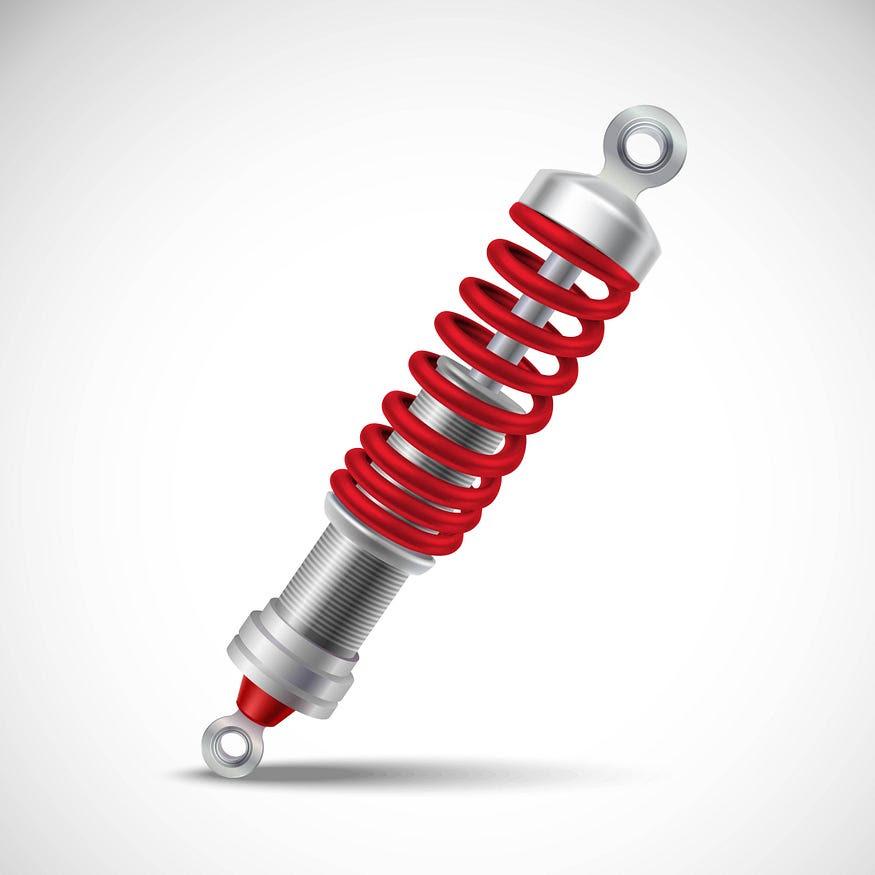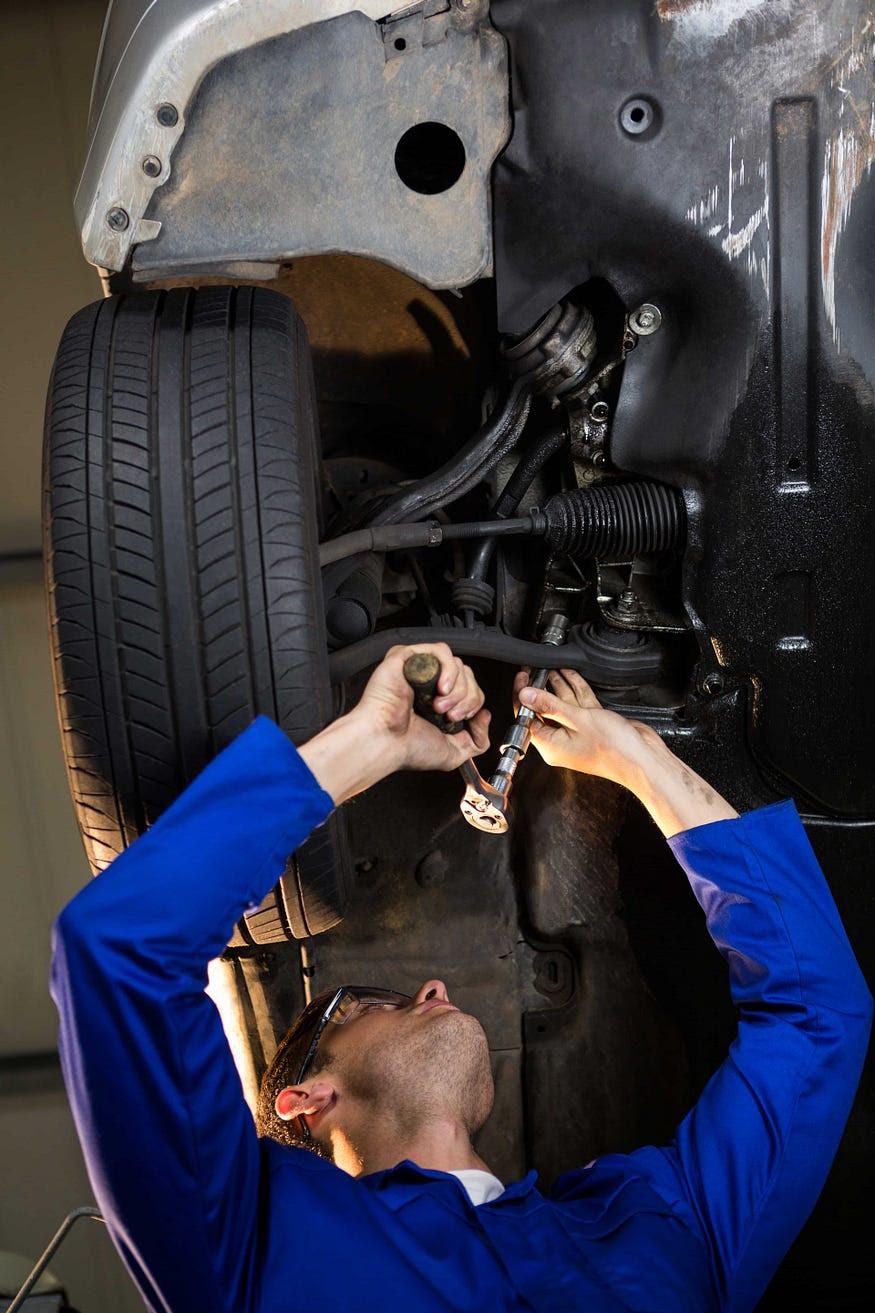Shock Absorbers: What They Do and When t
from
Edward V. Ford
on
October 13, 2023
Add a comment about this article!
When it comes to
maintaining a smooth and controlled ride in
your car, shock absorbers play a crucial
role. These essential components are
responsible for absorbing vibrations and
regulating the movement of suspension
springs.

In this comprehensive
guide, we will explore the functions of shock
absorbers, the different types available, how
often they need to be replaced, and the cost
associated with their replacement. So,
let�s dive in and learn more about
shock absorbers and their importance for your
vehicle�s performance and safety.
What Do Shock
Absorbers Do?

Shock absorbers, as the
name suggests, absorb shocks and vibrations
from the road. Their primary function is to
control the movement of suspension springs,
ensuring a smooth and comfortable ride.
Without them, your car would bounce up and
down uncontrollably, making it difficult to
handle and causing discomfort to the
occupants.
These damper components
prevent the springs from extending and
rebounding at an uncontrolled rate,
effectively managing the energy released from
impacts such as potholes. By absorbing road
shocks, shock absorbers also help maintain
optimal contact between the tires and the
road surface, enhancing traction and overall
vehicle stability.
Types of Shock
Absorbers

Shock absorbers come in
different types, each with its own unique
characteristics and suitability for various
driving conditions. Let�s explore the
two main types:
1. Hydraulic
Shock Absorbers
Hydraulic shock
absorbers are the traditional type commonly
found in most vehicles. They consist of a
cylinder or tube, an air compression chamber,
and a piston rod. As the suspension travels,
hydraulic fluid is forced through tiny holes
in the piston, creating resistance. This
resistance slows down the movement of the
springs, providing a smoother ride.
Hydraulic shock
absorbers are cost-effective and suitable for
normal driving conditions. However, they have
a disadvantage in harsher conditions, where
the oil inside can start to boil and foam,
causing inconsistent damping. This
phenomenon, known as cavitation, leads to a
loss of pressure and compromised performance.
2. Gas-Charged
Shock Absorbers
Gas-charged shock
absorbers are similar in design to hydraulic
ones but with a crucial difference. Instead
of air, these shocks contain pressurized
nitrogen gas in the compression chamber. The
nitrogen gas compresses the oil, preventing
cavitation and maintaining consistent damping
even in demanding driving conditions.
Gas-charged shock
absorbers are ideal for heavy-duty vehicles
and high-performance cars. They offer
enhanced stability, improved control, and
better handling, making them a popular choice
for modern vehicles. However, for classic
cars built in the 60s, 70s, or early 80s,
gas-charged shocks may be too stiff and not
suitable for the original suspension setup.
3. Adjustable
Shock Absorbers
In addition to the
standard hydraulic and gas-charged shocks,
some brands offer adjustable shock absorbers.
These shocks are designed for tuning and
allow you to adjust the suspension to
different driving environments and specific
needs. One example is Monroe shock absorbers
with intelligent RideSense technology, which
provide customizable suspension settings for
optimal performance and comfort.
When Should
Shock Absorbers Be Replaced?

Shock absorbers, like
any other vehicle component, have a limited
lifespan. Over time, they can wear out or get
damaged, leading to a decline in performance
and compromised safety. While there is no
fixed mileage at which shock absorbers need
to be replaced, a general rule of thumb is
around 50,000 miles. However, several factors
can affect their service life:
1
. Driving
Conditions: If you regularly
drive on poor quality roads or off-road, your
shock absorbers may wear out faster due to
increased exposure to bumps and vibrations.
2.
Load
: Carrying heavy loads
or frequently towing can put additional
stress on the shock absorbers, shortening
their lifespan.
3.
Quality
: The quality of the
shock absorbers themselves plays a role in
their durability. Higher-quality shocks tend
to last longer than cheaper alternatives.
To determine if your
shock absorbers need replacement, there are a
few signs to look out for:
Signs of Worn
or Damaged Shock Absorbers
4.
Bumpy and
Uncomfortable Ride
: If you notice
excessive bouncing, vibrations, or a
generally rough ride, it could indicate that
your shock absorbers are worn and no longer
effectively dampening the springs�
movement.
5.
Poor Handling
and Control
: Worn-out shocks can
cause your vehicle to feel unstable or
floaty, making it harder to control,
especially during cornering or sudden
maneuvers.
6.
Uneven Tire
Wear: If your shock
absorbers are no longer functioning
correctly, your tires may wear unevenly, with
certain areas showing more wear than others.
7.
Fluid Leaks:
Inspect your shock
absorbers for any signs of fluid leaks. If
you notice oil or hydraulic fluid leaking
from the shocks, it�s a clear
indication that they need to be replaced.
It�s important
not to ignore these signs, as worn o
r damaged shock
absorbers can significantly impact your
driving experience and safety on the road. If
you suspect your shocks are in bad condition,
it�s strongly recommended to have them
inspected by a qualified mechanic and
replaced if necessary.
How Much Does
It Cost to Replace Shock Absorbers?

The cost of replacing
shock absorbers can vary depending on several
factors, including the make and model of your
vehicle, where you get the work done, and the
specific location of the shocks on your car.
In the UK, the average cost of replacing rear
shock absorbers ranges from �259, while
replacing the front shocks costs around
�312 on average. However, prices can
range from �130 to �650,
depending on various factors.
It�s worth noting
that shock absorbers are typically replaced
in pairs to ensure balanced performance and
stability. Additionally, the replacement
process itself can take between 1.5 and 4
hours, depending on the complexity of the
vehicle�s suspension system.
Before installing new
shock absorbers, it�s advisable to
inspect the entire suspension system for any
faults or worn-out components. This includes
checking the control arms, ball joints, and
front and rear coil springs, as these parts
can also contribute to poor suspension
performance and ride quality.
Conclusion
Shock absorbers are
critical components of your vehicle�s
suspension system, responsible for absorbing
shocks and vibrations, maintaining tire
contact with the road surface, and ensuring a
smooth and controlled ride. Whether you opt
for hydraulic shocks, gas-charged shocks, or
adjustable shocks, regular maintenance and
timely replacement are essential to preserve
their functionality and ensure optimal
performance. One of the primary advantages of
getting a check mot of the car at Service My
Car is the exceptional transparency and
convenience offered.
By being aware of the
signs of worn-out shock absorbers and
understanding when they need to be replaced,
you can maintain a safe and comfortable
driving experience. If you notice any signs
of deteriorating shocks, it�s crucial
to have them inspected by a professional and
replaced if necessary. Remember, investing in
high-quality shock absorbers and timely
replacements will not only improve your
vehicle�s performance but also
contribute to your overall safety on the
road.
Remember, regular
maintenance and timely replacement of your
shock absorbers are essential for a smooth
and controlled ride. Don�t neglect this
crucial aspect of your vehicle�s
suspension system, and ensure your safety and
comfort on the road.
If you have issue with
car brake
pads, simply give us details of your
brake discs and pads issues to get a free
quote. This can be done on the Service My Car
app or website.
I'm sorry, this Article is unavailable or waiting for administration approval and therefore no comments are allowed.
|

